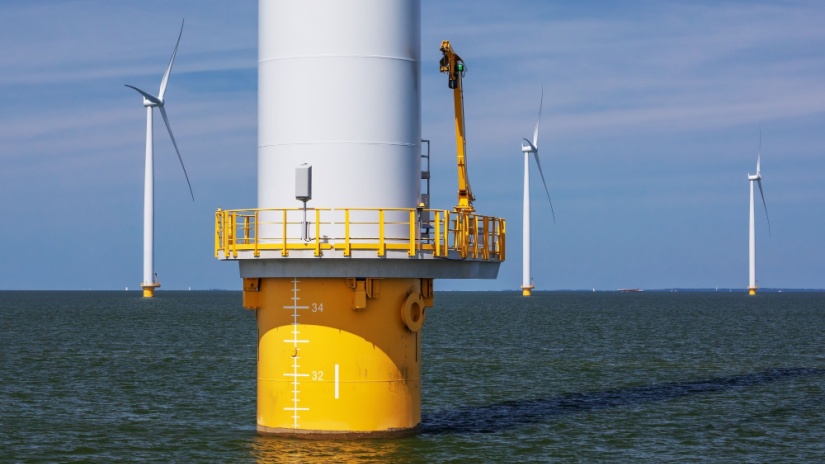Knowledge Centre
What is wind energy?

If you’ve travelled through Australia, you’ve probably seen those tall wind turbines spinning in the breeze. These impressive structures are more than just eye-catching sights along the highways; they are becoming a key part of Australia’s energy landscape.
In this article, Compare Energy will take a closer look at wind turbines. We’ll explain how they generate electricity, where you can find them across the country, and the important role they play in producing renewable energy.
Wind power is a clean and sustainable energy source that helps reduce reliance on fossil fuels, making it a crucial player in the fight against climate change. So, let’s take a closer look at wind turbines and discover how they contribute to a greener future for Australia.
What is wind energy?
Wind energy is electricity generated from the movement of air, particularly in areas with strong winds, such as hilltops and coastal regions. This energy is produced using wind turbines, also known as windmills, which convert the kinetic energy of the wind into electrical power.
Wind power is one of the earliest forms of renewable energy technology and has been harnessed for centuries, initially for tasks like grinding grain and pumping water. Today, wind energy is gaining popularity alongside other renewable sources, such as solar and hydroelectric power, due to its many benefits.
Wind turbines work by capturing the wind's energy with their large blades. When the wind blows, it turns these blades, which are connected to a generator inside the turbine. As the blades spin, they drive the generator, converting the wind's energy into electricity that can be supplied to homes, businesses, and industries.
One of the great things about wind energy is that it is renewable, meaning it won't run out if the wind continues to blow. Additionally, it is a clean source of energy that produces no harmful emissions, helping to reduce pollution and combat climate change.
As technology improves and more wind farms are built, wind energy is becoming an essential part of our move towards a more sustainable and environmentally friendly energy system. With its potential for growth and increasing efficiency, wind energy is poised to play a significant role in meeting our future energy needs.
How do wind turbines work?
Wind turbines work by converting the kinetic energy of the wind into electrical energy. Here’s a simple breakdown of how they operate:
Capturing wind energy
- Wind turbines have large blades (typically three) that are designed to catch the wind. When the wind blows, it pushes against these blades, causing them to rotate.
- The blades are shaped like aeroplane wings, which means they generate lift as the wind flows over and under them. This lift, along with the drag force, helps turn the blades.
Spinning motion
The blades are connected to a rotor. As the blades spin, they turn the rotor, which is connected to the main shaft inside the turbine.
Generating electricity
- The main shaft is connected to a gearbox, which increases the rotational speed of the shaft. This is important because the generator needs to spin at a high speed to produce electricity efficiently.
- The gearbox connects to a generator that converts the mechanical energy from the spinning rotor into electrical energy. As the generator spins, it creates an electric current.
Transmission of electricity
The electrical energy produced by the generator is sent through cables to a transformer, which increases the voltage for efficient transmission. This electricity is then fed into the power grid, making it available for homes and businesses.
Monitoring and control
Wind turbines are equipped with control systems that monitor wind speed and direction. This system can adjust the position of the turbine (through a mechanism called yaw) to face the wind, optimising energy capture. If wind speeds are too high, the turbine can shut down to prevent damage.
Types of wind turbines
- Horizontal axis turbines. Most common type, with blades that rotate around a horizontal axis.
- Vertical axis turbines. Less common, with blades that rotate around a vertical axis. They can capture wind from any direction but are usually less efficient than horizontal-axis turbines.
What is wind energy used for?
Wind energy has many useful applications, making it a valuable resource. The most common way to use wind energy is to generate electricity. Wind farms, which are groups of wind turbines, capture the wind’s energy and turn it into electricity. This power can be sent to the national grid or used directly in homes and businesses, helping to reduce our reliance on fossil fuels.
In addition to making electricity, wind energy can also be used for specific tasks, especially in rural areas. One important use is in pumping bore water. Wind-powered pumps can draw water from underground sources, which is great for supplying water for farming, animals, or irrigation. This is especially helpful in places where electricity is hard to get or where using fuel-powered pumps is not practical.
Wind energy can also support smaller technologies. For example, it can power remote sensors, communication devices, and even homes that are not connected to the electricity grid. These uses allow communities to take advantage of renewable energy and promote sustainability, especially in remote areas.
On top of that, wind energy can be combined with other energy sources. For instance, it can work alongside solar panels to provide a more reliable energy supply, taking advantage of both types of energy. By mixing different renewable sources, communities can ensure they have power even when the weather changes.
Can I switch to wind power for my home?
If you’re interested in using wind power for your home, there are some options available, but you can't exclusively sign up for wind energy at this time. The most straightforward way to have wind energy at home is to install your own wind turbine. However, unless you choose to go off-grid with your own setup, there’s no guaranteed way to ensure that the electricity you use is entirely generated by wind.
That said, if your home is connected to the grid, you might already be using a small amount of wind-generated electricity. If you want to support renewable energy, you can participate in a program called GreenPower through your electricity provider. With GreenPower, your energy retailer can work to offset some or all of your electricity usage by backing certified renewable energy projects, such as wind farms. This clean energy is then added to the grid, contributing to a greener energy mix.
Although this doesn’t guarantee that your home receives 100% wind power—since all electricity from various sources flows into the same grid—you will be helping to increase the proportion of clean energy available in the network. It's worth noting that most retailers will charge a bit more for GreenPower, so be prepared for that additional cost.
Advantages and disadvantages of wind energy
| Advantages | Disadvantages |
| It's a renewable resource; it won't run out as long as the wind is blowing | It isn't particularly consistent as an energy source as there may be times the wind doesn't blow |
| It's relatively low-cost to run, producing little to no greenhouse gases | The high initial costs may deter investment |
| It produces little to no greenhouse gases, combatting climate change | Wind turbines can pose a danger to bats and birds, as they can collide with spinning blades |
| Job creation in maintenance, manufacturing and installation is highly possible | Noise production concerns |
| Reduced independence on fossil fuels | Requires significant land areas to build on |
| Can be scaled up or down to fit differing energy needs | Not all locations are suited to wind generation |
Is wind power the best renewable energy choice for Australia?
Determining the best renewable energy source can be tricky, but wind energy certainly has many advantages. In Australia, wind is a plentiful resource, and the costs associated with generating and maintaining wind energy through turbines are relatively low compared to other clean energy options.
The use of wind energy is definitely increasing in Australia. However, the future growth of this sector will largely depend on how key stakeholders view wind generators. Concerns about the initial construction costs and the visual impact of wind turbines continue to be debated.
If you're interested in supporting renewable energy right now, consider opting for a GreenPower or carbon-neutral energy plan, or even installing solar panels on your roof. If you decide to go the solar route—or if you already have solar panels—take a look at our annual ratings of solar providers to find out which retailers offer the best feed-in tariffs for Australians.
Ready to upgrade to a renewable energy plan?
Contacting Compare Energy today is the best thing that you can do to ensure that you are on the right path with your energy usage and sustainability goals. A renewable energy plan is one of the best investments you can make to do better for the environment. Call us today on 1300 790 106.

